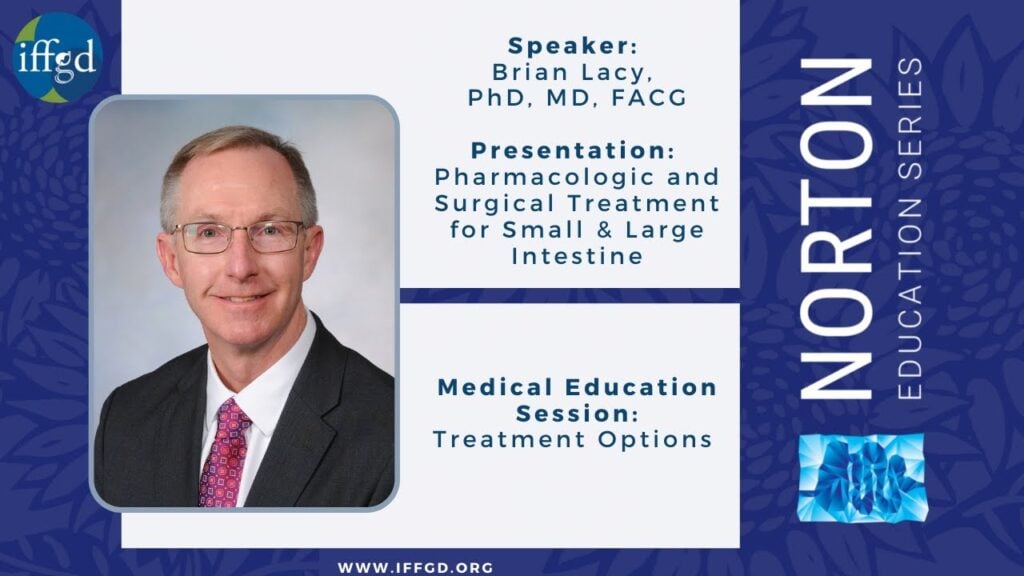Ayten Salahi

Patient Perspective on SIBO: 2021 NES

Patient Perspective on SIBO – Presented by Tina Aswani Omprakash This video is a part of the 2021 Norton Education Series: 30th Anniversary Event which was broadcast on November 6 & 7, 2021. Included in Session 5: Bacteria in the Gastrointestinal (GI) Tract (SIBO and H.Pylori), this presentation provides the patient perspective on Small Intestinal […]
Physician Intro to SIBO: 2021 NES

Physician Intro to SIBO – Presented by Dr. Darren Brenner This video is a part of the 2021 Norton Education Series: 30th Anniversary Event which was broadcast on November 6 & 7, 2021. Warning: Some of the educational videos in this program contain graphic images of the human body related to medical procedures and for […]
Pharmacologic & Surgical Treatments for the Small and Large Intestine: 2021 NES

Treatments for the Small and Large Intestine – Presented by Dr. Brian Lacy This video is a part of the 2021 Norton Education Series: 30th Anniversary Event which was broadcast on November 6 & 7, 2021. Warning: Some of the educational videos in this program contain graphic images of the human body related to medical […]
Disorders of the Small Bowel: 2021 NES

Disorders of the Small Bowel – Presented by Dr. Lucinda Harris This video is a part of the 2021 Norton Education Series: 30th Anniversary Event which was broadcast on November 6 & 7, 2021. Warning: Some of the educational videos in this program contain graphic images of the human body related to medical procedures and […]
Christine Randazzo Kirschner

Johanna Richter

Anonymous Personal Story
Anonymous Personal Story: SIBO- “7 years of pain or discomfort gone!” I hope someone reads this and it helps! 7 years of pain or discomfort gone! Nothing worked. I was tested positive for Small Intestinal Bacteria Overgrowth which mimics reflux. They gave me Xifaxan which helped but didn’t take away the upper abdomen bloating and […]
411 How to Qualify for Social Security Benefits
Gastrointestinal (GI) disorders are more common than people think. Even though almost everyone has occasional bouts of GI issues, thousands of people have chronic and severe GI disorders that can make it impossible for them to work. If you have worked in the past but can’t work now because of a GI disorder that you expect to last a year or more, you can file a […]
EA Stewart

162 – Gastrointestinal Motility Disorders of the Small Intestine, Large Intestine, Rectum, and Pelvic Floor
The gastrointestinal tract is divided into four distinct parts that are separated by sphincter muscles; these four regions have distinctly different functions to perform and different patterns of motility (contractions). Abnormal motility or abnormal sensitivity in any part of the gastrointestinal tract can cause characteristic symptoms: food sticking, pain, or heartburn in the esophagus; nausea and vomiting in the stomach; pain and bloating in the small intestine; and pain, constipation, diarrhea, and incontinence in the colon and rectum.
262-Understanding Bloating and Distension
Bloating can be described as the feeling that there is an inflated balloon in the abdomen. It is a commonly reported symptom and is sometimes associated with distension, or the visible increase in the width of the area between your hips and chest (abdominal girth). Both bloating and distension cause discomfort, and sometimes pain, and have a negative impact on the quality of life for some individuals.
